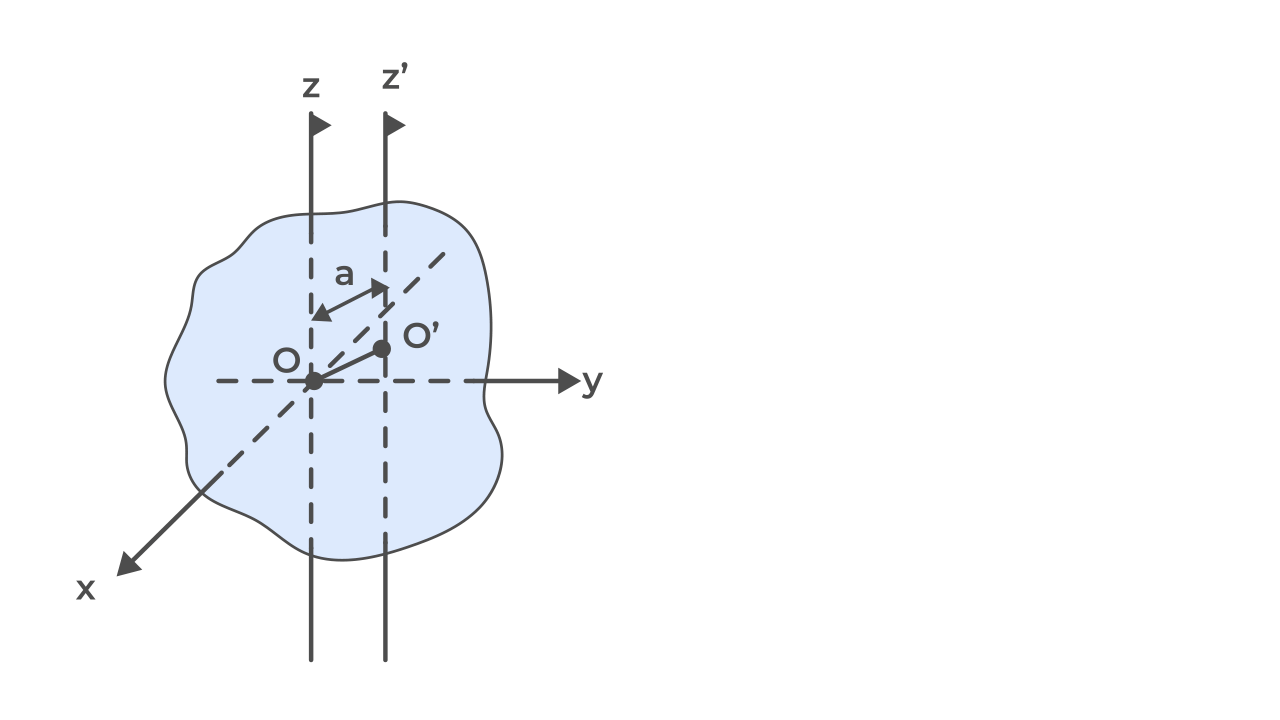Question
What is Theorem of Parallel Axes?
Answer
Theorem of Parallel Axes is:
The moment of inertia of a body about any axis is equal to the sum of the moment of inertia of the body about a parallel axis passing through its center of mass and the product of its mass and the products of its mass and the square of the distance between the two parallel axes. z and z′ are two parallel axes separated by a distance α. The z-axis passes through the center of mass O of the rigid body. Then according to the theorem of parallel axes
I′z = Iz + Mα2
where Iz and I′z are the moment of inertia of the body about the z and z′ axes respectively, M is the total mass of the body and α is the perpendicular distance between the two parallel axes.

